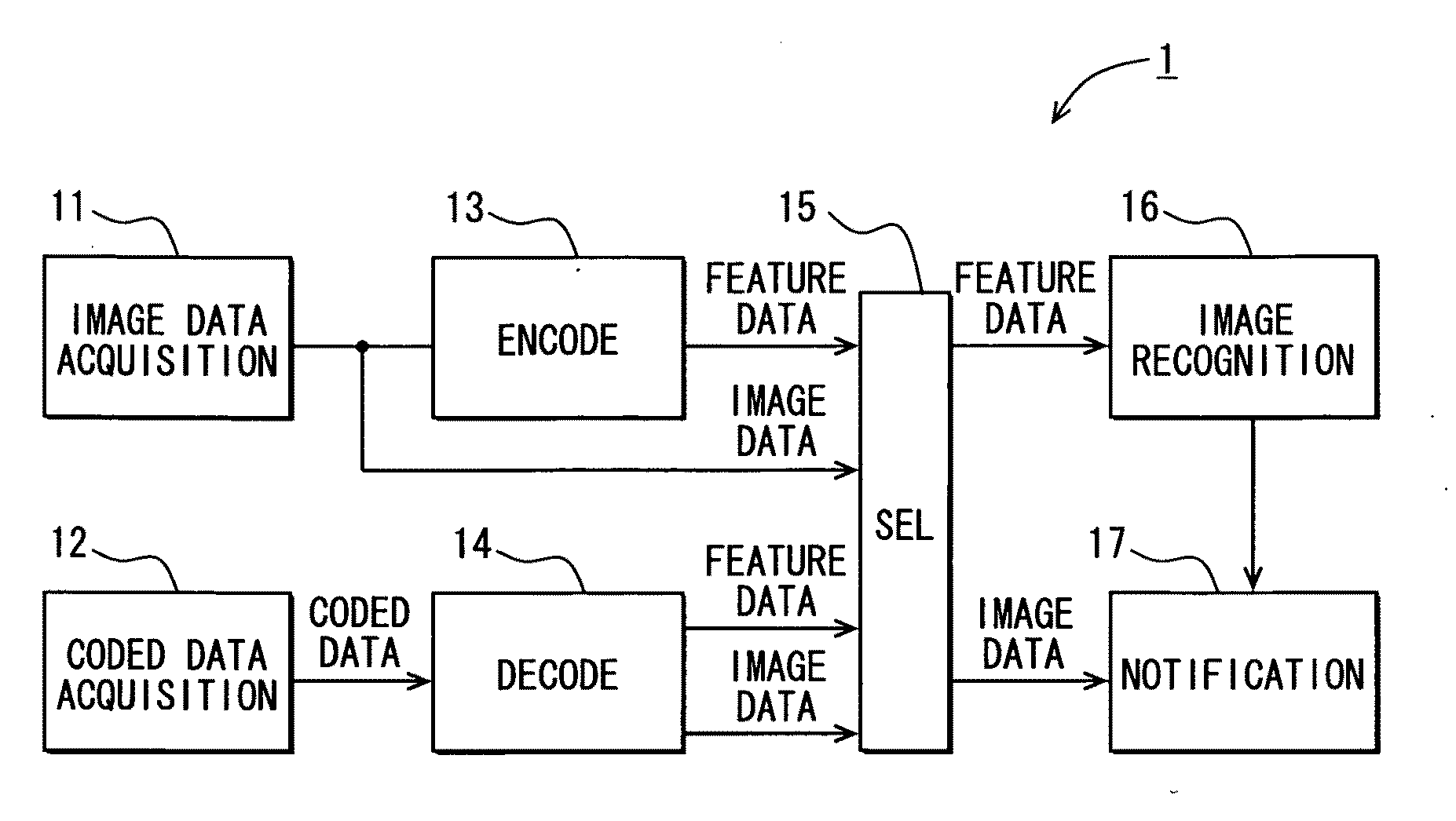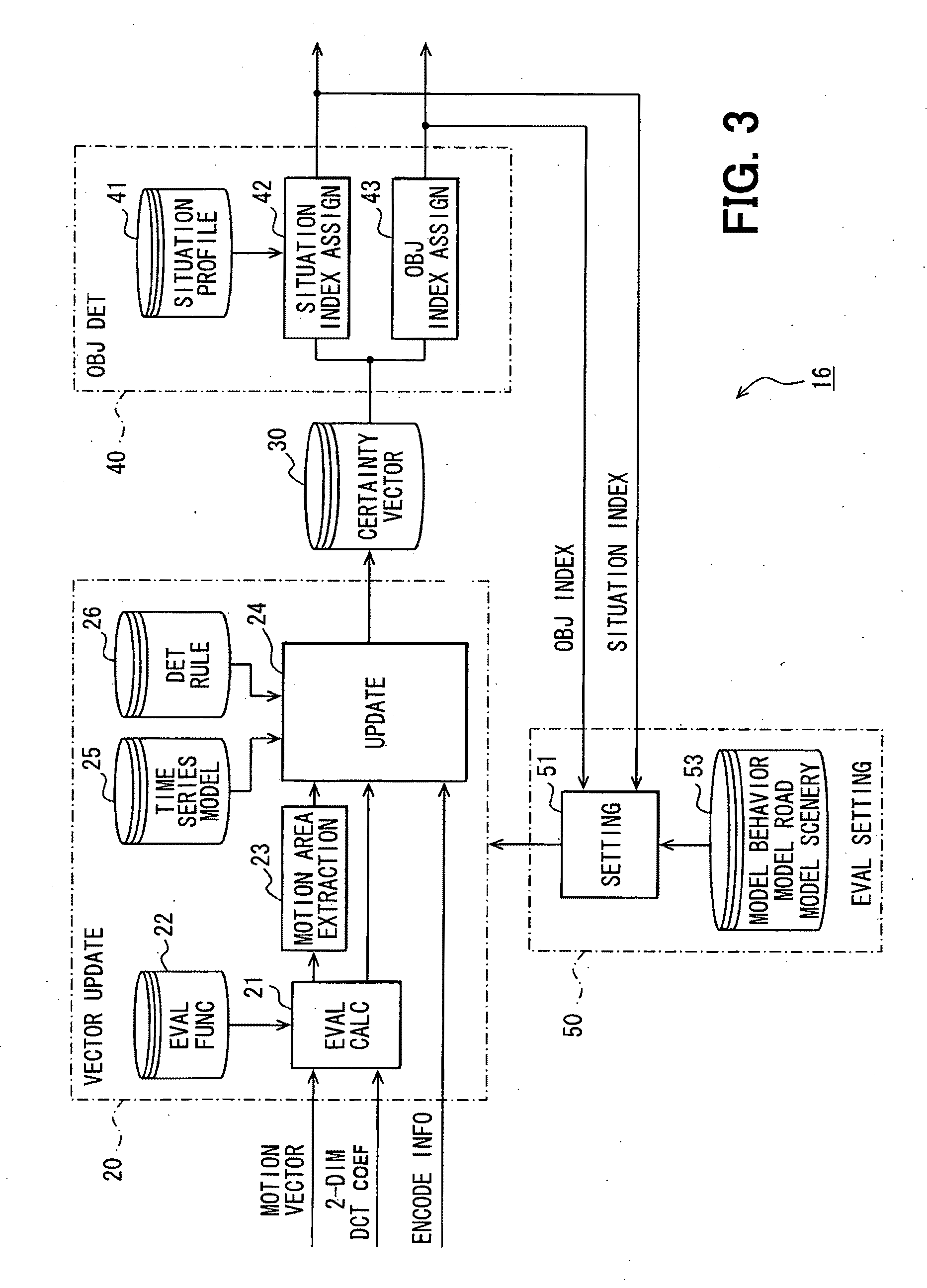Apparatus for image recognition
a technology of image recognition and apparatus, applied in scene recognition, instruments, transportation and packaging, etc., can solve the problems of difficult extraction of pedestrian motion, small pedestrian image, and inability to generate motion vectors from pedestrian images, and achieve high accuracy. the effect o
- Summary
- Abstract
- Description
- Claims
- Application Information
AI Technical Summary
Benefits of technology
Problems solved by technology
Method used
Image
Examples
Embodiment Construction
[0028]An embodiment of the present disclosure is explained in the following with reference to the drawings.
(System Structure)
[0029]FIG. 1 is about an electronic apparatus 1 for use in a vehicle that recognizes various objects including a pedestrian, in particular, based on acquired image information. The recognized object is then notified for the driver of the vehicle. The block diagram in FIG. 1 shows an overall structure of the electronic apparatus 1.
[0030]As shown in FIG. 1, the electronic apparatus 1 includes an image data acquisition unit 11 which acquires image data of a moving image derived from a camera in the vehicle, a coded data acquisition unit 12 which acquires coded data of moving image encoded in MPEG format (i.e., an MPEG-1 format in the present embodiment) from a stationary camera that images roads and other objects through wireless communication with a roadside device or the like, an encode unit 13 for coding the data from the acquisition unit 11 in MPEG format in ...
PUM
 Login to View More
Login to View More Abstract
Description
Claims
Application Information
 Login to View More
Login to View More - R&D
- Intellectual Property
- Life Sciences
- Materials
- Tech Scout
- Unparalleled Data Quality
- Higher Quality Content
- 60% Fewer Hallucinations
Browse by: Latest US Patents, China's latest patents, Technical Efficacy Thesaurus, Application Domain, Technology Topic, Popular Technical Reports.
© 2025 PatSnap. All rights reserved.Legal|Privacy policy|Modern Slavery Act Transparency Statement|Sitemap|About US| Contact US: help@patsnap.com



